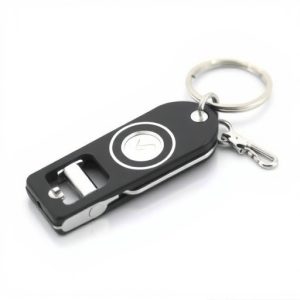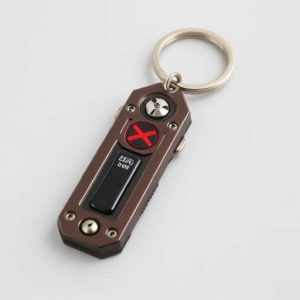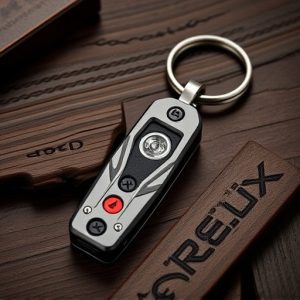Tactical Keychain Weapons: Design, Techniques, and Training for Effective Self-Defense
Tactical keychains, with ergonomic designs and integrated tools, offer more than convenience. By mas…….
Tactical keychains, with ergonomic designs and integrated tools, offer more than convenience. By mastering grip fundamentals, textured surfaces, dual-grip mechanisms, and adjustable straps, users can unlock their full potential as versatile personal safety devices. Advanced techniques like the thumb grip enhance control and accuracy, while robust materials ensure durability. Regular training and practice drills are crucial for developing proficiency, improving muscle memory, and adapting to diverse self-defense scenarios.
“Unleash your inner defender with the ultimate self-defense tool—the tactical keyring. This compact yet potent device transforms everyday keys into a powerful self-defense weapon. In this comprehensive guide, we’ll explore the art of tactical keychain weapons, delving into design elements that ensure a secure grip and maximum impact.
Discover advanced techniques to master your keychain’s potential, material choices for durability, and training drills to develop essential skills. Elevate your self-defense game with our expert insights on tactical keychain weapon techniques.”
- Understanding Tactical Keychain Weapons: A Brief Overview
- Key Design Elements for Effective Self-Defense Grip
- Advanced Techniques to Maximize Performance
- Choosing the Right Materials and Construction
- Training and Practice Drills for Optimal Skill Development
Understanding Tactical Keychain Weapons: A Brief Overview
Tactical keychains equipped with self-defense tools are more than just convenient accessories; they represent a practical blend of everyday utility and potent protection. These compact devices often incorporate various tactical grip designs, each offering unique advantages in terms of control, comfort, and functionality during stressful situations. Understanding the tactical keychain weapon techniques behind these innovations is crucial for users to maximize their effectiveness.
The keyring’s ergonomic design plays a pivotal role in ensuring a secure and stable grip, enabling swift deployment of embedded tools like flashlights, multi-tools, or even self-defense devices. Certain models employ textured surfaces, dual-grip mechanisms, or adjustable straps to enhance user control, making it easier to manipulate the keychain during high-pressure scenarios. Mastering these tactical keychain weapon techniques allows individuals to transform a seemingly ordinary accessory into a versatile and powerful tool for personal safety.
Key Design Elements for Effective Self-Defense Grip
When it comes to designing a keyring for self-defense, the grip is everything. Effective tactical keychain weapon techniques hinge on a few key design elements. First and foremost, the keyring should feature a robust and ergonomic grip that allows for a secure, comfortable hold. This ensures swift and precise control during stressful situations. The ideal grip should accommodate various hand sizes and shapes, enabling users of all dexterities to handle it with ease.
Additionally, incorporating features like textured surfaces or adjustable gripping mechanisms can significantly enhance the keyring’s performance. Textured materials provide better friction, preventing accidental slippage even when wet or under pressure. An adjustable grip allows users to customize their hold based on the task at hand, whether securing a door or deploying self-defense tools. These tactical considerations are vital in turning an ordinary keyring into a practical and reliable self-defense tool.
Advanced Techniques to Maximize Performance
Incorporating advanced techniques into your self-defense strategy with a tactical keychain weapon can significantly maximize its performance. One such technique is the thumb grip, which enhances control and accuracy during a fight. By positioning your thumb across the top of the keychain, you gain a firm grasp, allowing for swift and precise strikes or blocks. This simple adjustment improves your overall handling and effectiveness in close-quarter encounters.
Additionally, practicing dynamic movements with your tactical keychain weapon can give you an edge. Quick draws, circular swipes, and side arms maneuvers not only improve your reflexes but also help to disorient potential threats. Mastering these techniques enables users to adapt swiftly to various situations, ensuring they remain one step ahead. The versatility of such advanced tactics ensures that your self-defense tool is more than just metal; it becomes an extension of your tactical prowess.
Choosing the Right Materials and Construction
When designing a tactical keychain weapon, one of the most crucial considerations is selecting the appropriate materials and construction methods. The keyring’s primary function is to serve as a self-defense tool, so durability and reliability are paramount. Opting for high-quality, robust metals like stainless steel or advanced alloys ensures the keychain can withstand frequent use and extreme conditions. These materials offer excellent corrosion resistance, ensuring your tactical accessory stays reliable over time, no matter the environment.
The construction process also plays a vital role in performance. Precise craftsmanship guarantees a seamless blend of functionality and comfort. Well-designed grip sections, for instance, should provide a secure, non-slip hold, enabling users to deploy the keychain weapon with ease and speed during tactical situations. Additionally, incorporating subtle yet effective features like locking mechanisms or customizable clips enhances versatility, making it a versatile tool for various self-defense scenarios and everyday carry needs.
Training and Practice Drills for Optimal Skill Development
Training and practice drills are essential components in developing self-defense skills with a tactical keychain weapon. Regular exercises, focusing on various techniques like grip manipulation, strike accuracy, and defensive maneuvers, can significantly enhance your proficiency. Incorporating different scenarios into your routine allows you to adapt quickly under pressure. For instance, practicing strikes against moving targets mimics real-life situations, improving your timing and precision. Additionally, drills that involve rapid keyring deployment and follow-up strikes are game-changers in close-quarters combat.
The key to mastering tactical keychain weapon techniques is consistency. Repeated training sessions will ingrain muscle memory, enabling you to react instinctively during an emergency. Consider setting up a safe practice area where you can experiment with different grips and stances without worrying about external hazards. Remember, every drill should aim to improve your overall self-defense capabilities, ensuring you’re prepared for any unexpected challenges.
The tactical keychain weapon, a compact self-defense solution, combines form with function. By understanding key design elements, mastering advanced techniques, and choosing robust materials, individuals can maximize their keychain’s potential. Regular training and practice drills are essential to develop proficiency and ensure effectiveness in real-world situations. With the right approach, tactical keychains offer a practical and reliable way to enhance personal safety, making them valuable tools for everyday carry.


